On a morning in the early summer of 1913, Anglo-Irish explorer explorer Sir Charles Howard-Bury commenced a 15,000-kilometre, eight-month round-trip by rail and steamship from his palatial County Westmeath home in Ireland, towards Central Asia’s fabled Tien Shan range. After first arriving in Omsk, Russia, he continued further south up the Irtysh River for 800 kilometres to reach Semey. It was from this dusty and isolated outpost he commenced the most intriguing portion of his journey, travelling for 2,500 kilometres, over two months, down postal roads in a horse drawn cart known as a tarantass towards the Jungar Alatau mountain range dividing the Chinese-Tsarist Russian border. All of this he accomplished mostly alone and through a region teetering on the edge of anarchy due to the collapse of China’s Manchu Empire.
One hundred years later, I set out to retrace Howard-Bury’s equine excursion across Eastern Kazakhstan. With me was Jamie Maddison who I’d met on an exploratory climbing expedition to Kyrgyzstan in 2010. That trip had kick-started our fixation with Central Asia, a fixation that found focus in the book ‘Mountains of Heaven’ by Marian Keaney. This esoteric piece of retro adventure-travel literature was based on the extensive diaries that Howard-Bury kept during his journey. We were sparked by a curiosity to venture along those same post roads travelled by him and see how the country had evolved over the century since. The politics are at least a great deal more settled these days so any anarchy we’d witness was likely to be of our own making.
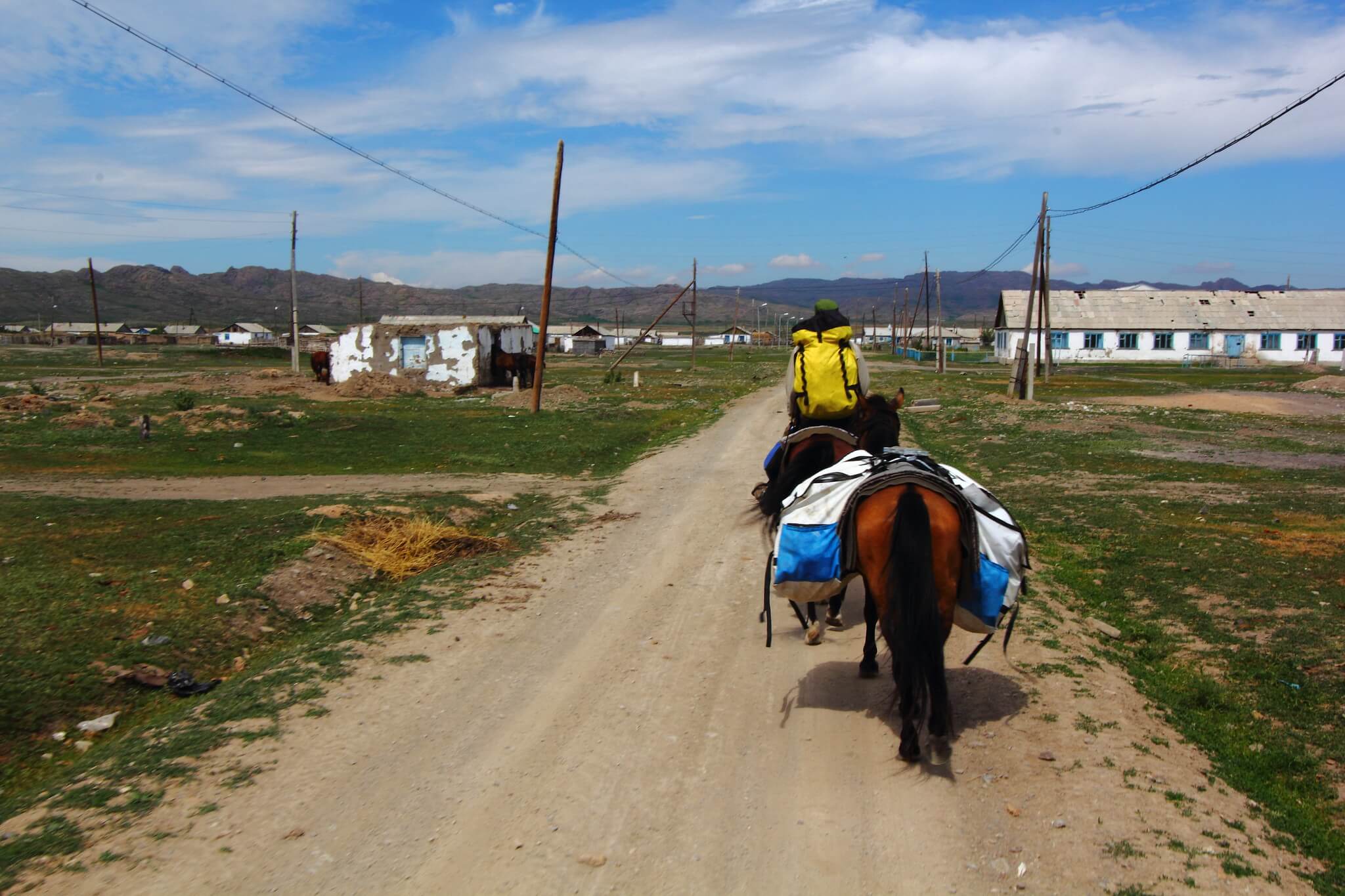
Howard-Bury’s own intentions were unique for his time. He was neither driven by imperial conquest – this was shortly after the era of The Great Game, the strategic manoeuvrings of the British and Russian Empires in Central Asia – or even anything remotely commercial. He had taken this lengthy sojourn to the heart of Asia purely to hunt big game animals such as Marco Polo sheep and ibex. After a month in the range collecting as many horns and heads as possible he carried on towards Almaty and eventually reached Tashkent, Uzbekistan where he finished the remainder of his journey by rail through Turkmenistan, Iran, Turkey and back in to Europe. Howard-Bury was an inherently stoic man who would later become a prisoner of war during the First World War, and still later go on to lead the first ever reconnaissance expedition to Everest in 1921, on which were found the mystery tracks in the snow that were labelled as belonging to the ‘Abominable Snowman’. Most alluring about him for us was that despite his significant accomplishments, he has always been somewhat overlooked in the world of exploration.
Armed with a copy of Keaney’s book rather than hunting rifles, we began our tribute trip in Ust-Kamenogorsk, a few hours’ drive east of Semey. There, with the help of our friend and translator Dinara, we scouted out numerous horse farms and met with local contacts we had been introduced to by others who had ridden in the country before. The biggest concern we both had, aside from our paltry riding experience which amounted to two weeks and many tumbles in Western Mongolia, was how we would purchase three horses in a country and culture we knew nothing about.
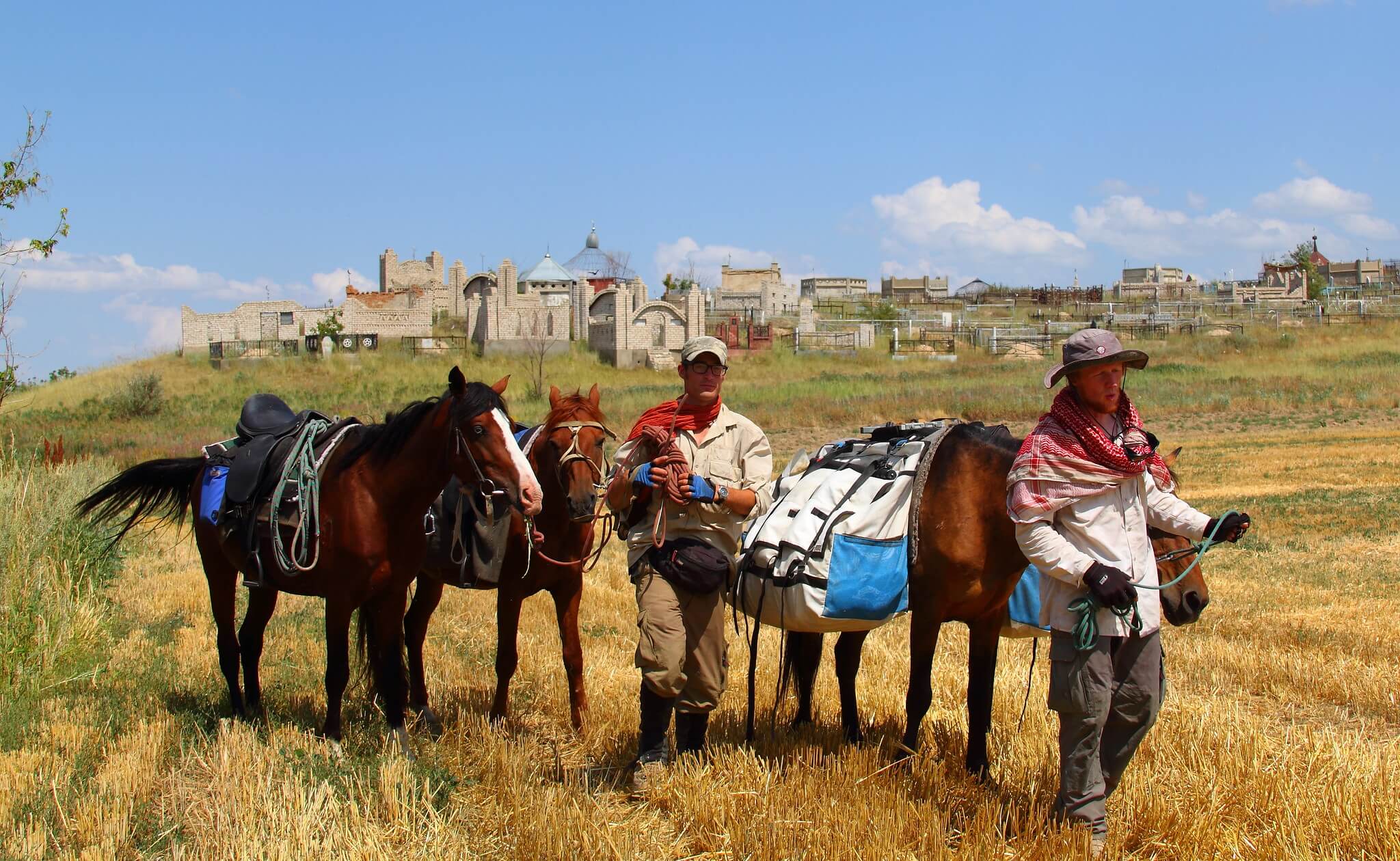
Our mentor, CuChullaine O’Reilly, founder of the Long Riders’ Guild, an online resource for all things related to long-distance horse trekking, was invaluable here. He warned us before leaving that the arts of horse rustling and scamming inexperienced buyers were as ancient as the domestication of the animal. With each horse costing US$2,000 and our blatant disadvantage of being two obviously naïve and young foreigners wandering around cash-strapped and decaying post-Soviet collective farms, we were convinced we’d get duped out of our dreams.
After five days we had finally cobbled together three acceptable horses from three separate farms. Unlike Howard-Bury who could change his horses every thirty or so kilometres at staging posts and ride seated in a tarantass, our own trip would require us to ride in the saddle on the same horses for over one thousand kilometres to Almaty. We felt daunted not by the distance or the mid-summer heat, but by how we would look after the welfare of our three animals. It was a weighty responsibility for two callow English lads whose combined experience with looking after animals ran to a budgie, two hamsters and a Labrador.
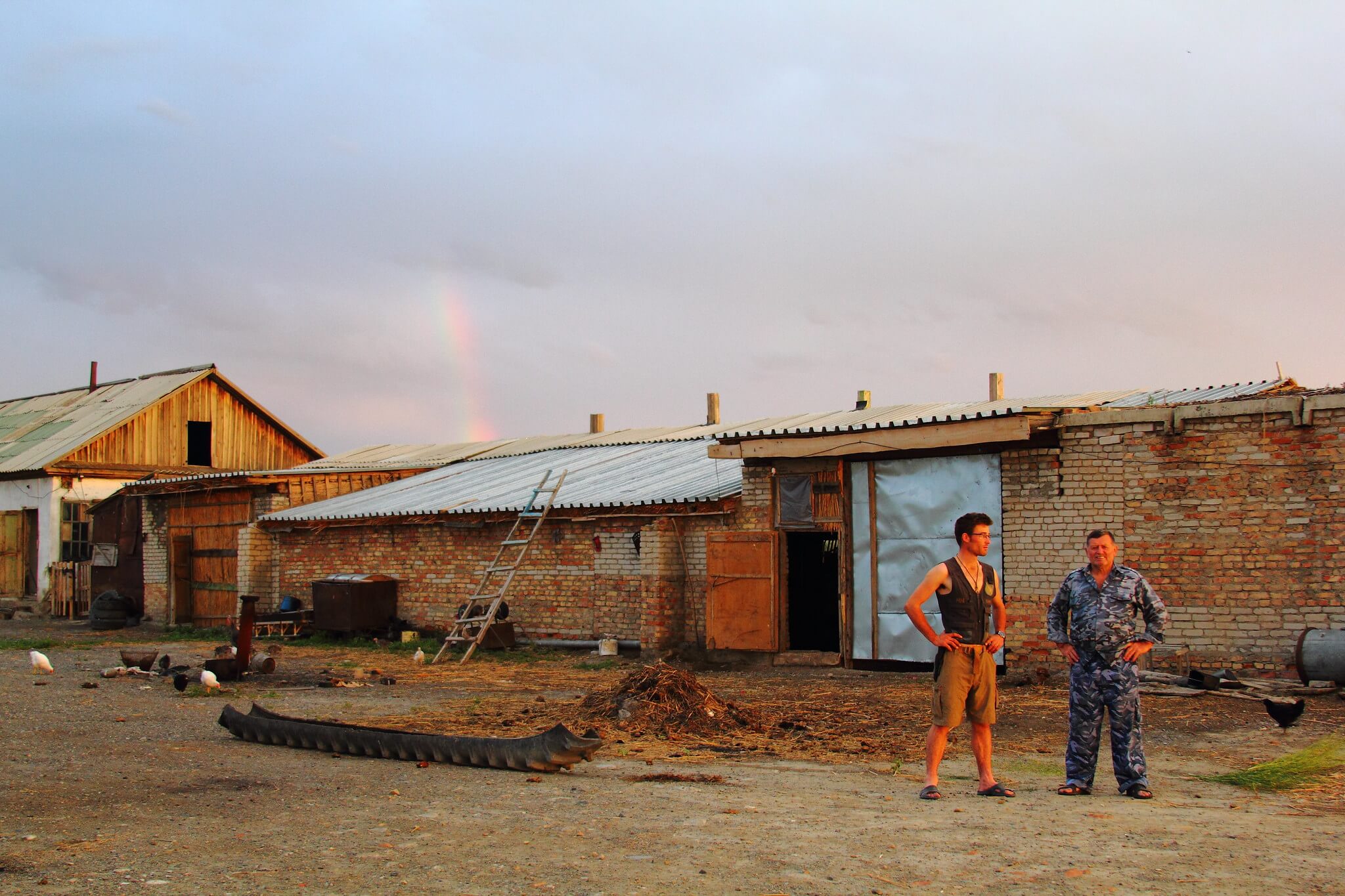
The night before our departure saw us celebrating at our horse broker Azamat’s house in the small farming town of Samarskoje near the edge of Lake Zaysan, considered by some to be the oldest lake in the world. Four bottles of vodka between three people drowned most of our memories of the evening, except for when Azamat’s friend, who joined later, drunkenly waved a knife and proclaimed that Jamie’s throat should be slit for expressing his appreciation for Kazakh women and cross-cultural marriage.
Although we still found him an endearing character in the harsh light of morning, we were keen to make a hasty departure from the town. After an earlier run in with an Ust-Kamenogorsk crook in a public toilet and getting stalked while fleeing between hotels, we figured it was best to keep a low-profile for the duration of our journey. We were already fed up from having to wander around the city in disguise whilst using only a single spare set of clothes between us.
The first few days of the ride as we trotted slowly southwards towards Moskovka were filled with endless wrong turns in the mountains that involved bushwhacking and backtracking out of our navigational mistakes. Our route finding wasn’t made any easier by our outdated and poorly detailed Soviet-era maps.
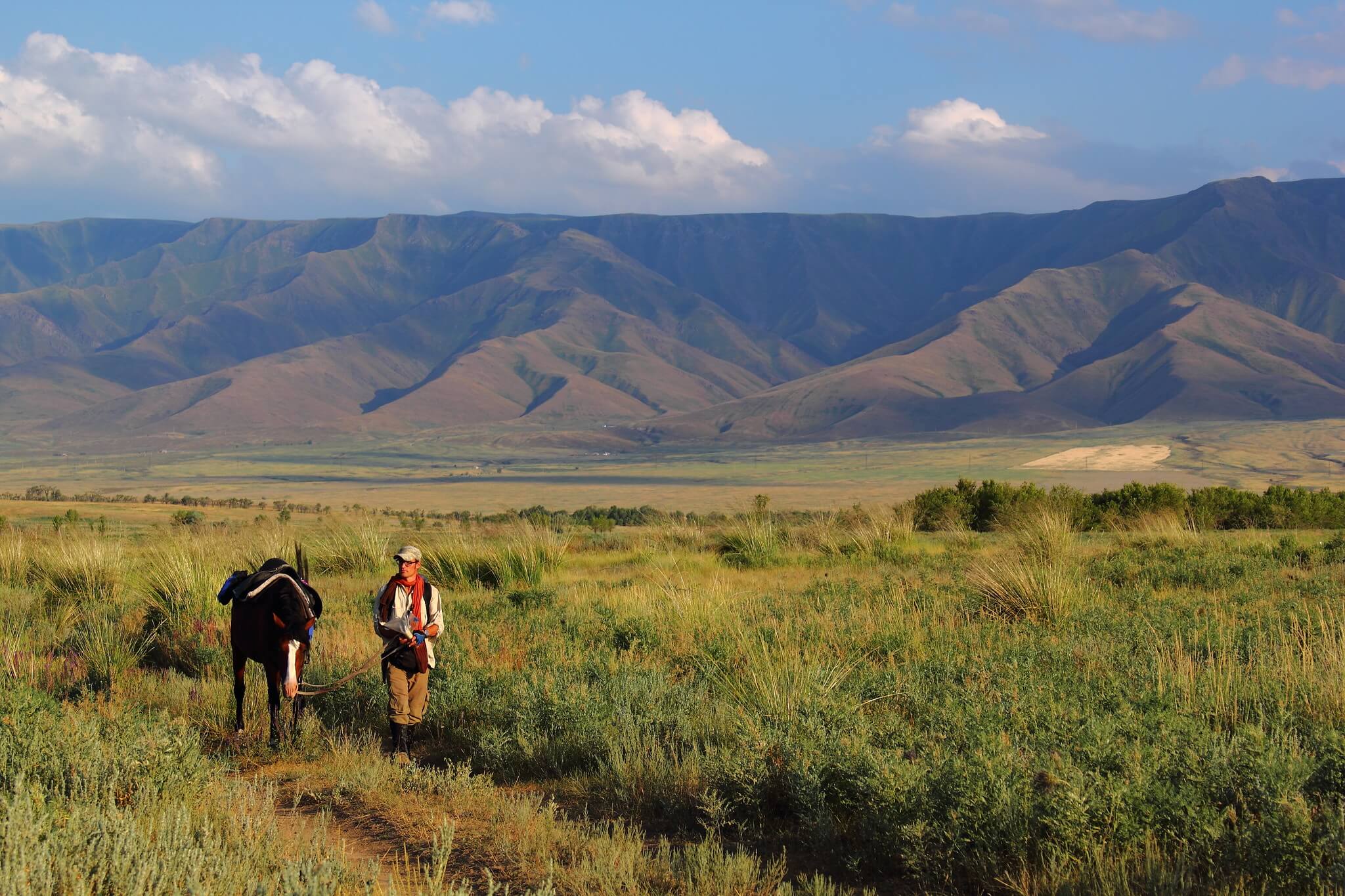
We quickly realised that it was important to know how to struggle in style, to manage our inevitable suffering effectively, especially when it came to caring for the horses. We knew that neglecting our personal hygiene, getting ourselves dehydrated and underfeeding ourselves during the ride was acceptable for us, but inflicting that on our horses was non-negotiable. Our keenness on equestrian ethics contrasted starkly with Howard-Bury’s own journey given that he lived in an era when the desire for creature comforts often rode roughshod over the comfort of our fellow creatures.
To complicate things further, Arman, my horse, was incredibly frisky and bad tempered. It was as if he could sense a tedious trip ahead that would take him far from the familiar and lush grazing around Samarskoje. The other horses followed his lead and retaliated in their own ways: Charlie being slow and unresponsive to Jamie’s commands and Totoro seemingly alternating speeds at random and often wanting to veer to the right.
We later found, after Totoro led me into a road narrowly missing a collision with a truck, that he was in fact completely blind in his right eye. This upsetting realisation was somewhat mellowed when Jamie noted the irony that he was sold to us by a man also missing his own right eye. The next week saw us linking up small villages via dirt track and road.
The next week saw us linking up small villages via dirt track and road. Slowly we began to develop a rhythm within our little team with me focused on managing the packhorse and filming, while Jamie did the navigation.
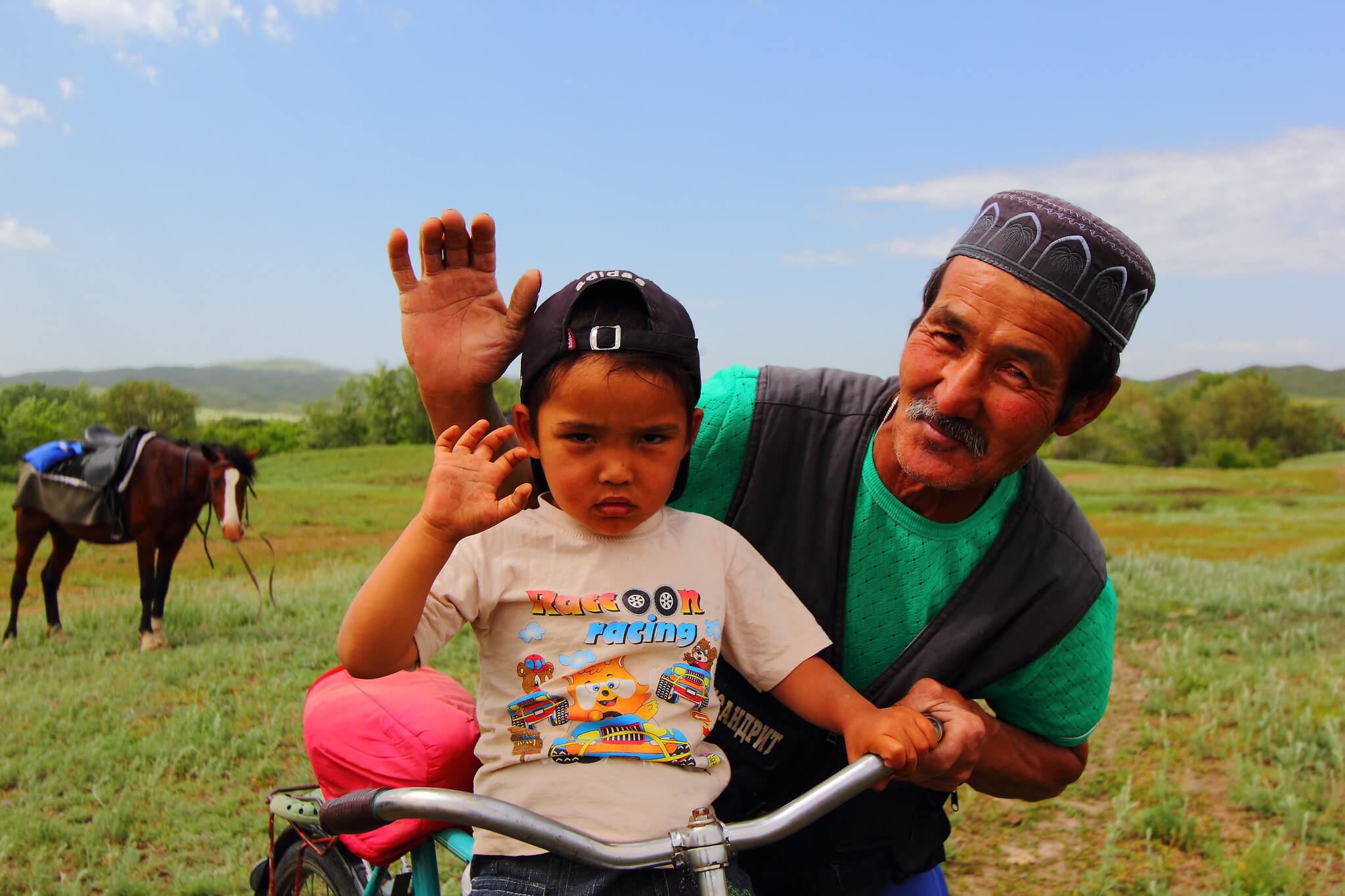
The hours outside of riding proved the most time consuming with the camp chores and horse maintenance taking upwards of three hours each morning and evening. Time in our tent usually involved trying to rest and hide from the relentless giant horse flies and mosquitoes underneath the sweat-encrusted horsehair saddle blankets which doubled up as our sleeping system. Not surprisingly, man and horse came to smell as one before long.
On our tenth day we rode casually in to the agricultural town of Kokpekty which lay at the start of a wide plateau bordered by deserted mountains on the horizon. Getting out of the town would prove less straightforward.
The local police pulled us over demanding to see the documents and health certificates for our horses while scrutinising our visas. They then proclaimed that for the next portion of our route to Ayagoz we would need a gun to protect us against crag-dwelling bandits and horse-eating wolves. They offered no suggestions as to how or where we would procure a gun: they were just satisfied to have delivered his alarming warning.
Not long after escaping the grip of Kazakh bureaucracy, as we ventured into these supposedly lawless mountains, a Soviet-era Lada car began chasing us off road. Tearing across the dusty tract and ploughing through tumbleweed, the reckless driver honked incessantly as he hung halfway out the window shouting: ‘Moy droog! Droog!’. Jamie and I looked at each other in bewilderment and figured it must be some drunk joyrider. We became more concerned as the excitable driver began to circle around us and our horses, engulfing us in a cloud of dust and grit while continuing to shout, ‘moy droog!’As he finally came to a halt, we speculated what he might be shouting, wondering if maybe he was high and wanted to offer us drugs. We calmed the horses as the large man extricated himself from the tiny Lada and stood proudly, waving and pointing to his adobe doma (house) far in the distance.
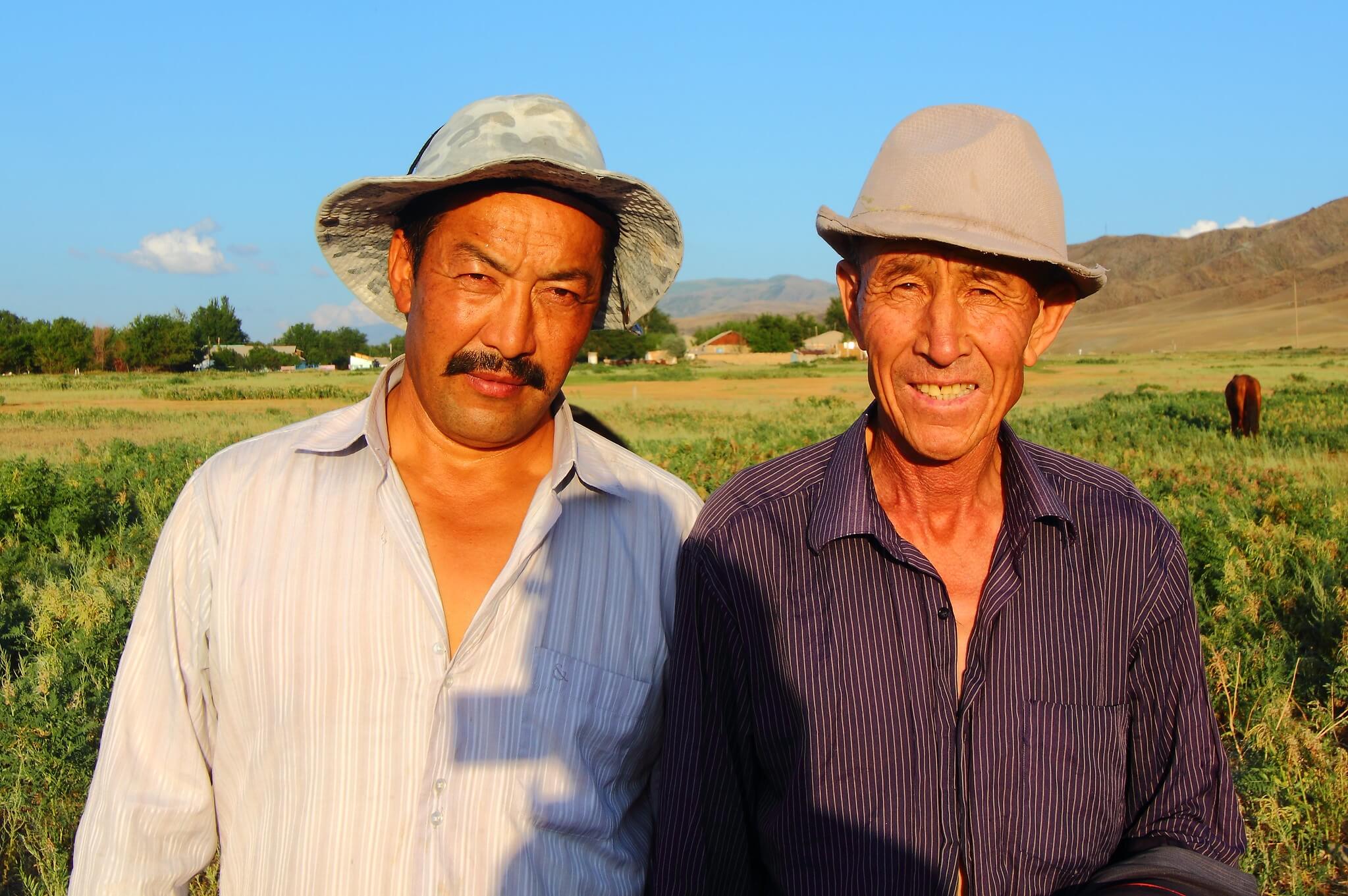
We weren’t sure what to make of him, but he introduced himself as Mairbek and his ready and deeply mischievous laugh was quickly infectious. Figuring he was just keen to meet a couple of rag-tag foreigners fumbling their way over the steppe with three horses, we asked him what he meant by ‘droog’ and through some trial-and-error, and much to our embarrassment, learnt it meant ‘friend’ in Russian.
We arrived at his farmstead relieved yet somewhat ashamed of our mistrustful assumptions. There he provided us with a room for the night, a flowing river for our horses and plentiful grazing. Under a glowing sunset, Mairbek took us out to help herd his cattle from up in the foothills down to the greener river grass for the night. Our horses reveled in the moment, free to gallop at speed through the giant swaying meadow. We all raced one another and laughed at Mairbek’s antics as he youthfully swung his bullwhip in circles above his head.
Even though at this point our own journey was still in its infancy and we had little sense of the huge distance we still had to cover to Almaty, Mairbek’s hospitality instilled in us a sense of joy and wonder at what might lay ahead for us in our encounters with locals.
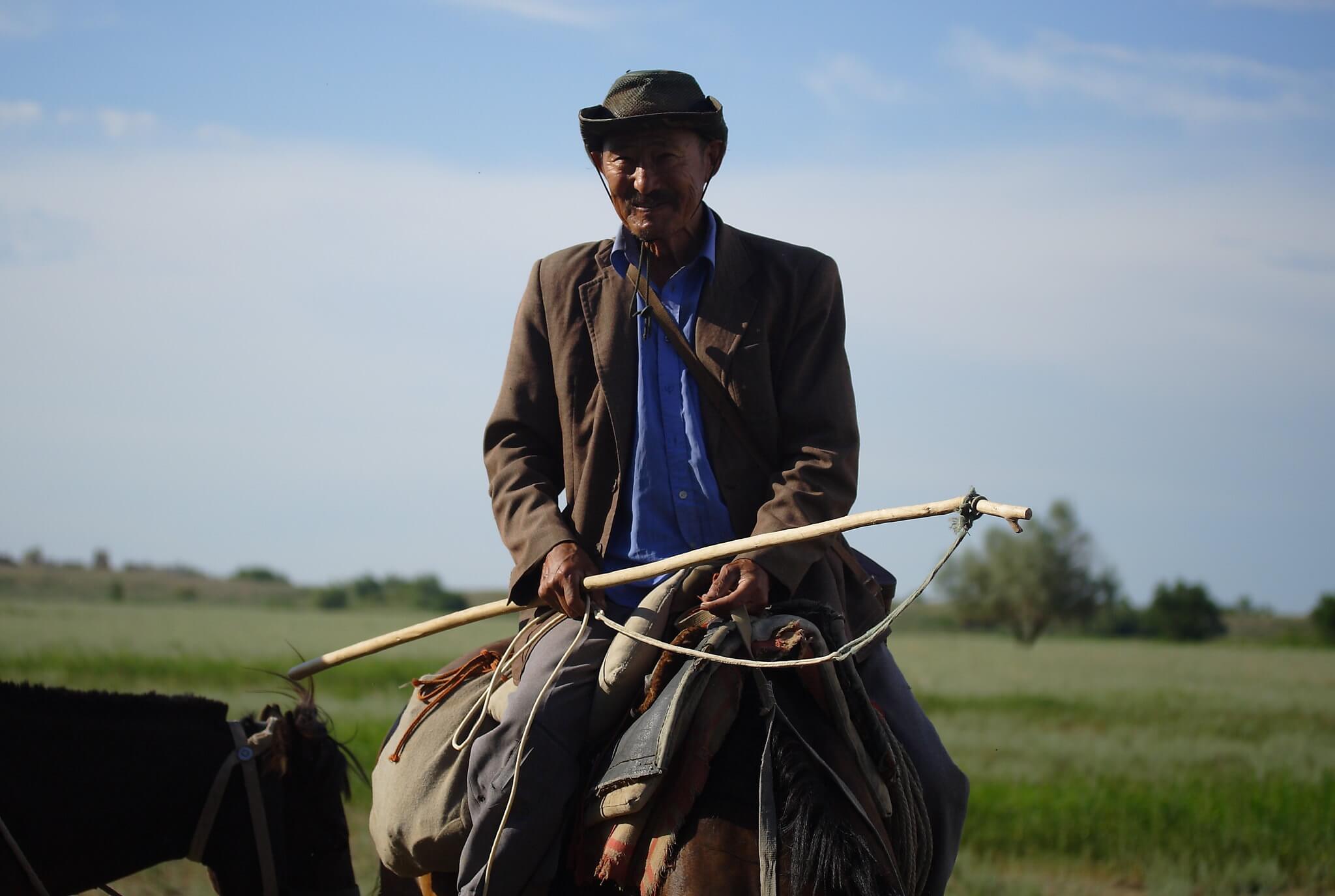
The remaining two months took us through deeply contrasting experiences and emotions. Our lowest moments usually saw us walking through scorching heat and long waterless stretches with rucksacks on, leading our horses as we tried to minimise the number of saddle sores. But each time our spirits would be lifted by the good nature and generosity of strangers, whether it was receiving water from the only well in 70 kilometres, the curious children of herders coming to play around our tent or simply inviting us for tea and providing grain for our horses. Everyone we met played a vital role in sustaining us in body and spirit and helping us reach our destination.
During our long days in the saddle we often passed the time discussing how Kazakhstan had evolved over the last century since Howard-Bury’s ride. One of the greatest changes we noted was how the large-scale collectivised agriculture of the Soviet times had transformed the landscape.
Most of the towns and settlements we passed exist to support a grain industry that comprises 10% of Kazakhstan’s GDP, with an output to nearly 30 million tonnes annually. Sustaining this monster trade has transformed vast areas of once arid steppe to arable land, but only by diverting many streams and rivers, especially those flowing north off the Jungar Alatau range. This in turn has meant that many areas of non-agricultural land have become more arid and even desertified, forcing many living in those areas to install ever deepening wells to tap the falling water table.

Another stark change we noticed was a total absence of any nomads. At first we thought we were in the wrong area or had come at the wrong time of year, but later we learnt that the gers (traditional felt huts) that were scattered across the Kazakh steppe in Howard-Bury’s era, mostly disappeared in Soviet times when the people were were forced into collectives. We had already seen the remnants of rural nomadic life, without even realising. All of the mountain villages we passed through, especially between Kokpekty and Ayagoz were actually auls, a traditional Kazakh word for a collection of gers comprising many different nomadic families. This term is now normally used to describe a rural village of mortar and brick homes, today’s residents being the descendants of steppe-roaming forebears.
For all that Russia’s imperial shadow lay heavy over the intervening past, we still found many things to link our time on the steppe with that of our illustrious predecessor. Despite a century’s worth of change, the beauty and simplicity of long distance equine travel remains as unspoiled and pure as ever.
